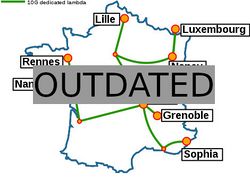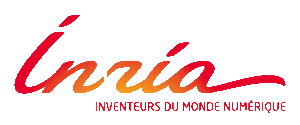Grid5000:Home
|
Grid'5000 is a large-scale and versatile testbed for experiment-driven research in all areas of computer science, with a focus on parallel and distributed computing including Cloud, HPC and Big Data. Key features:
Older documents:
|
Random pick of publications
Five random publications that benefited from Grid'5000 (at least 2517 overall):
- Leo Cazenille, Nicolas Bredeche, José Halloy. Automated optimization of multilevel models of collective behaviour: application to mixed society of animals and robots. Bioinspiration and Biomimetics, 2022, 17 (5), pp.055002. 10.1088/1748-3190/ac7fd1. hal-03842222 view on HAL pdf
- Esteban Marquer, Pierre-Alexandre Murena, Miguel Couceiro. Transferring Learned Models of Morphological Analogy. ATA@ICCBR2022 - Analogies: from Theory to Applications (ATA@ICCBR2022), Sep 2022, Nancy, France. hal-03783959 view on HAL pdf
- Danilo Carastan dos Santos, Thi Hoang Thi Pham. Understanding the Energy Consumption of HPC Scale Artificial Intelligence. CARLA 2022 - Latin America High Performance Computing Conference, Sep 2022, Porto Alegre, Brazil. pp.1-14. hal-03845090 view on HAL pdf
- Sirine Sayadi. Architectures réparties et conteneurs logiciels sécurisés pour coopérations médicales multi-sites. Calcul parallèle, distribué et partagé cs.DC. Ecole nationale supérieure Mines-Télécom Atlantique, 2022. Français. NNT : 2022IMTA0331. tel-03922210 view on HAL pdf
- Gustavo Salazar-Gomez, David Sierra González, Manuel Alejandro Diaz-Zapata, Anshul Paigwar, Wenqian Liu, et al.. TransFuseGrid: Transformer-based Lidar-RGB fusion for semantic grid prediction. ICARCV 2022 - 17th International Conference on Control, Automation, Robotics and Vision, Dec 2022, Singapore, Singapore. pp.1-6. hal-03768008 view on HAL pdf
Latest news
Failed to load RSS feed from https://www.grid5000.fr/mediawiki/index.php?title=News&action=feed&feed=atom: Error parsing XML for RSS
Grid'5000 sites
Current funding
As from June 2008, Inria is the main contributor to Grid'5000 funding.
INRIA |
CNRS |
UniversitiesUniversité Grenoble Alpes, Grenoble INP |
Regional councilsAquitaine |


